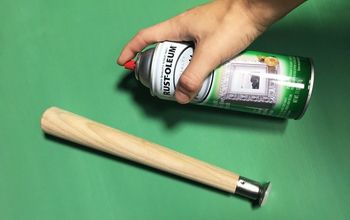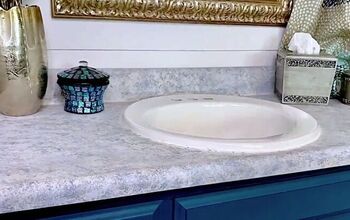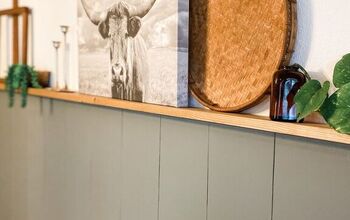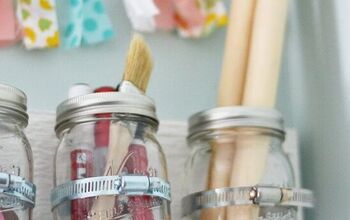How to Clean Marble Countertops Naturally and Remove Stubborn Stains

By Alexa Erickson
The chic, clean look of marble countertops can do wonders for elevating a kitchen. Knowing how to keep those crisp countertops to keep them in prime condition is important, and marble is a fragile material that should be treated with special care; cleaning marble countertops isn’t as simple as wiping them down with an all-purpose cleaner and calling it a day. From day-to-day maintenance to tackling scary stains, this guide will teach you everything you need to know about how to clean marble countertops.
About Marble Countertops
Marble is a metamorphic rock, or rock buried deep beneath the Earth’s surface. Marble begins as the soft stone called limestone, which is mostly made of a mineral called calcite. Under exposure to high heat and pressure from the inner workings of the Earth’s core, the stone recrystallizes, transforming the texture of the rock and resulting in the calcite crystals growing and interlocking. The colored veining look is very popular in homes and is the result of mineral deposits from the original limestone showing through in the marble. However, the purest piece of marble stone has a lack of color variation.
One of the most popular places you’ll see marble in the home is on countertops. Not only are marble countertops revered for their beauty, but they’re ideal for bakers since the surface stays cool, preventing dough from getting too soft and helping temper chocolate to the ideal consistency to make a variety of treats.
The biggest challenge with marble is that, because of its natural properties, it falls victim to acidic liquids like vinegar and citrus juices, which eat away at the material and leave dull spots known as etches. That’s why it’s imperative to use a simple, basic cleaning solution to clean marble countertops, which we’ll detail in the next section.
How to Clean Marble Countertops Naturally
Keep your marble countertops in their best shape using simple, natural household ingredients. Here’s a DIY all-purpose spray you can make and apply to marble countertops to clean them off.
Tools and Materials Needed
- Water
- Castile soap
- Spray bottle
- Clean cloths
- Baking soda
- Crushed chalk
Step 1: Make the Spray
In a spray bottle, combine two cups of water and one teaspoon of castile soap. Swirl to mix.
Step 2: Spray and Wipe the Surface
Spray marble countertops with the DIY, all-natural cleaning agent. Wipe away using a damp cloth, then wipe dry.
Step 3: Restore Shine
To restore shine to the marble, it needs to be polished after cleaning. A natural approach is to mix three tablespoons of baking soda with one quart of water and apply it to the countertop surface. Allow it to dry for several hours. Wash off with a cloth saturated with warm water. Wipe crushed chalk on the countertop, then wipe away all chalk residue with a warm water-soaked rag, then dry with a clean cloth.
How to Remove Rust, Oil, Organic, and Ink Stains from Marble Countertops
Marble is porous, which makes getting stains out of it difficult, but not impossible. It all comes down to how you approach the stain what kind of mark you’re dealing with. We’ll show to remove food, water, and rust stains from marble countertops.
To remove rust, oil stains (from materials like splattered grease, lotion, peanut butter, and vinaigrette), organic stains (like coffee rings), and ink stains, you’ll want to make a marble poultice, or in other words, a soft paste that will sit on the stain. The poultice ingredients—the solvent, to be specific—will vary depending on the type of stain, but the process remains the same. Here are the solvent options for each type of stain:
- Oil: Mineral spirits or acetone
- Organic: 6-percent hydrogen peroxide
- Ink: 12-percent hydrogen peroxide or ammonia
- Rust: According to the experts at The Marble Cleaner, the most effective solvent for rust stains is a liquid commercial rust remover. As a reminder, be sure to buy a rust remover that is non-acidic.
Tools and Materials Needed
- Solvent (depends on the type of stain; see above)
- Mixing bowl
- Baking soda
- Mineral water
- Clean cloths
- Plastic wrap
- Tape
- Cloth
- Mixing bowl
Step 1: Make a Poultice
Add one cup of the recommended solvent into the mixing bowl and mix in one cup of baking soda. This mixture is scalable; you may need more than a cup of each if your stain is large.
Step 2: Clean and Wet the Area
Wipe the stained area clean of any loose dirt. Wet the area with a rag soaked in mineral water to penetrate the pores of the marble.
Step 3: Apply the Poultice
Spread the poultice on the spot. Cover with plastic wrap, tape down the edges, and let sit for 24 hours.
Step 4: Wipe Away the Poultice
Remove the plastic wrap and wipe away the paste with a warm, damp cloth. Follow up with a marble cleaning spray.
How to Remove Water Stains from Marble Countertops
If you leave a condensation-soaked cup on marble countertops, it’ll likely leave water rings. In most cases, water stains will come out using a marble cleaner and a soft towel. If this method doesn’t work, dry the surface and rub a fine steel wool grade # 0000 in a circular motion over the stain to buff it out on the marble.
Dark Marble
How to Remove Etching in Marble Countertops
Marble countertops will get etched. Acidic foods such as vinegar, lemons, and wine react with the calcium carbonate that makes up the marble and dissolves some of the marble surface. The result is a small spot that’s dull and unpolished. That’s why it’s important to clean up spills right away. But life happens, and sometimes you don’t even see that an acidic food has sprayed the surface. When you notice a stain, it’s time to get to work to remove that etching!
Tools and Materials Needed
- A few clean towels
- Marble cleaning spray
- MB 11 polishing powder
- Spray bottle with clean water
Step 1: Clean the Surface
Use a marble-safe cleaning spray to wipe down and then dry the entirety of your marble countertops.
Step 2: Apply Polishing Powder and Water
Cover the etch mark with polishing powder, then use a spray bottle to spray water onto the powder until it’s visibly damp.
Step 3: Scrub the Stain
Dampen a towel with water from the spray bottle, then use the damp towel to gently but quickly rub the etch mark for 30 seconds. Be careful not to apply too much pressure, as that may scratch the marble.
Step 4: Clean Up with Marble Cleaner
Once there are no leftover signs of etching, spray a marble cleaner over the surface. Wipe and clean the surface with a clean towel until dry.
Mistakes to Avoid When Cleaning Marble Countertops
Marble countertops are an investment, and the last thing you want to do is ruin them by making a simple mistake. Here are some important takeaways when it comes to cleaning marble countertops.
- When cleaning, avoid using any cleaners—commercial or homemade—that use acidic agents such as vinegar, bleach, or lemon juice.
- Avoid abrasive cleaning agents or hard brushes, which will etch and potentially scratch the marble.
Tips for Protecting Marble Countertops
Prevention is key in keeping marble countertops clean and free of stains and scratches. Here are some helpful tips for protecting your marble countertops.
- Avoid working with any acidic foods on the surface and steer clear of setting acidic drinks, like your coffee cup or a margarita glass, on the counters.
- Don’t allow wet marble to air dry—instead dry with a clean towel. Water spots can remain on the marble surface and stain it.
- When cleaning, avoid using any cleaners—commercial or homemade—that use acidic agents such as vinegar, bleach, or lemon juice.
- Avoid abrasive cleaning agents or hard brushes, which will etch and potentially scratch the marble.
- Have your marble sealed by the manufacturer before installation, and once installed, plan to keep up with sealing every three to six months. You can tell if your marble needs to be resealed with a quick test: Pour a small amount of water onto an inconspicuous area of the marble, wait about ten minutes, then wipe it off. Dry the area with a paper towel or soft cloth. If the surface where you poured the water shows any discoloration or darkness compared to the rest of the counter, then it’s time to reseal the marble. (And if there is a water stain, use our method above for treating water stains on marble countertops.)
Do you have any additional tips for how to clean marble countertops?


























Frequently asked questions
Have a question about this project?
How do you clean the grout on your floors and counters